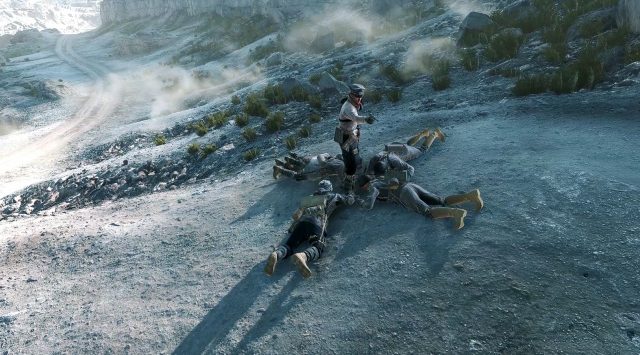Content warning: Unreal but nonetheless violent imagery.
How to Disappear (2020) dir. Total Refusal (aka Michael Stumpf, Leonhard Müllner, and Robin Klengel)
There’s plenty of actual war footage available at the moment, and for those who don’t want to click the link, the short is entirely constructed from footage “filmed” within a war simulation game. A voiceover observes the methods video games use to encourage or require conflict and punish desertion, then relates a history of desertion in combat scenarios, its opposition to rising nationalism, and its affect on wars throughout history. Meanwhile, the footage shows attempts by players to avoid combat within the video game by hiding in bushes or jumping from cliffs or crawling around their ostensible allies, impeding the movements of players trying to get their war fix with their absurd, wriggling soldier avatars.
This short comes to us from a performance art collective called Total Refusal, which describes itself as “a pseudo-marxist media guerilla focused on the artistic intervention and appropriation of mainstream video games.” The group’s output includes an earnest guided tour of a Manhattan architecture in an online shooter or installations that show the difficulty of using playground equipment within the seemingly realistic game environment.
I don’t have anything to add to this film’s content and message which speaks adequately for itself. Instead I think it’s interesting to consider the form, where the whole film takes place in a virtual environment, a movie created not only without a human being appearing on screen, but using no items or even a camera that ever existed except as the image we see. “How to Disappear” could be a companion with the feature documentary We Met in Virtual Reality which debuted at in February at Sundance (itself a virtual event this year). That film followed a community of people who gathered on the VRChat platform during the pandemic, and it similarly mines memorable moments from glitches and awkward movement in the virtual world. Both films look toward the new era of virtual environments, all constructed from the ground up. Rules and limitations handed down from the creators will govern interactions in these worlds, but both films suggest the user can identify and attempt to resist the design.

